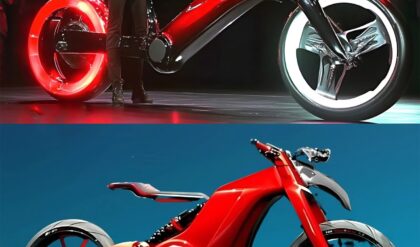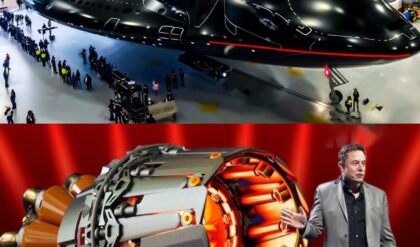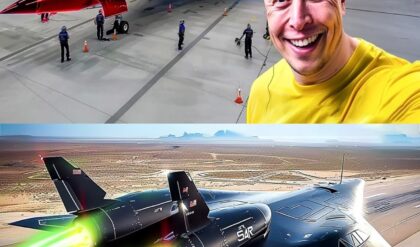FANS DURING THE TAYLOR SWIFT ERAS TOUR. PHOTO: ALLEN J. SCHABEN / LOS ANGELES TIMES VIA GETTY IMAGES
Late at night on August 7th, the phone at Rome’s fire department rang off the hook with calls from alarmed locals experiencing what they presumed was an earthquake: tremors that were, in fact, generated by a nearby Travis Scott concert. Two weeks prior, seismic activity shook Lumen Field Stadium during the Seattle leg of Taylor Swift’s Eras tour. The media dubbed it a “Swift-quake”.
ADVERTISEMENT
Fans wasted no time in taking to the internet to take credit for the quakes, viewing them as earth-shaking proof of their devotion. Although they occupy opposite ends of the spectrum in terms of genre, branding and fan demographic, both Swift and Scott share infamously enthusiastic fan bases. Scott’s concerts are notoriously spirited and mosh-pit heavy, resulting in his fandom being dubbed Ragers. During the US branch of the Eras tour, Swifties have reported post-concert “amnesia” due to unprocessable excitement, while others have worn diapers so as not to miss a song for a bathroom break.
Although the earth did indeed quake, these convulsions can’t technically be classified as earthquakes. By definition, an earthquake must fracture the earth’s crust, and is caused by either the movement of tectonic plates, a volcano or invasive environmental interference, like fracking. Seismologists quickly concluded that the tremors were a result of the decibel level and tempo of the music and, to their credit, the frantic jumping of tens of thousands of fans: Scott’s concert (where Ye was a surprise guest) attracted 60,000 attendees, while the record-breaking Seattle dates of Swift’s tour drew 144,000 Swifties over two nights.
The media soon reported that the ground motion at Scott’s concert was equivalent to a 1.3 magnitude earthquake, while Swift’s, to competitive Swifties’ delight, came in at 2.3. But Mouse Reusch, the Regional Shake Alert coordinator at the Pacific Northwest Seismic Network – who was part of the team monitoring the seismic activity caused by the Swift concerts – says that this number was incorrectly deduced and run with by the media.
ADVERTISEMENT
TAYLOR SWIFT AT THE LUMEN FIELD STADIUM IN SEATTLE, WASHINGTON. PHOTO: MAT HAYWARD/TAS23/GETTY IMAGES FOR TAS RIGHTS MANAGEMENT
“The seismometer at Lumen Field is approximately 136 metres west of the centre of the stadium. We had some other seismometers that were several hundred metres away that did not show the concert at all… If there was a 2.3 magnitude earthquake, it would have been felt by many more seismometers,” she tells VICE.
Researcher in geophysics Giovanni Diaferia analysed the seismic recording of the Travis Scott concert and shared the results in a widely quoted X post. Over the phone, he concedes that the “magnitude” he reported was an educated, back-of-the-envelope estimate. He calculated how much energy 60,000 people— at approximately 70 kg each, jumping in sync about 0.15m above ground – would generate, then compared it to the movement recorded by the seismometer: It checked out.
“Usually, a 1.3 earthquake is not felt,” he says. “Commonly, it must be magnitude two, magnitude three to be felt. But in certain conditions, for example, for people that are quite sensitive or living in a tall building, at least on the third or fourth floor, a 1.3 earthquake that occurs in close vicinity can be felt.”
Both experts were keen to stress seismometers’ extreme sensitivity, implying that detecting the movement of feverish fans shouldn’t come as a surprise. “Even a small step causes disturbance on the instrument,” explains Diaferia.
ADVERTISEMENT
Luckily, thanks to the tremors’ low intensity, neither incidents resulted in injury or visible architectural damage. Most of the time, earthquakes with a magnitude of less than 2.5 are unnoticeable, while those that register below 5.5 typically don’t cause significant destruction.
That said, Scott’s concert didn’t send convulsions through a sturdy 21st century concrete monstrosity, it shook an archaic Roman chariot racing stadium dating back to 6th century BCE. Given the venue’s historic significance – it was rebuilt in 46 BC by Julius Caesar – local archaeologists have condemned the event, calling for the site to be reserved for gentler cultural activity, and suggesting that such events could place concert-goers in peril.
“The Circus Maximus is a monument. It is not a stadium, not a concert hall,” Alfonsina Russo, the director of the head of the Colosseum Archaeological Park, told CNN. “These mega rock concerts put it at risk… Rock concerts should be held in stadiums so as not to endanger public safety.”
Reusch too harbours concerns about hosting high-octane events in a venue that’s unaccustomed to them. (The Circus Maximus has hosted gigs in the past, but by comparably tame artists like Imagine Dragons and Bruce Springsteen). “Similar to when you hear in the news about a party or some sort of unusual event where there’s a large number of people on, like, a deck, a place that normally doesn’t have that many people, sometimes, unfortunately, there are things that fall that shouldn’t,” she theorises.
ADVERTISEMENT
Influencer Saint Léon travelled from Paris to Rome for the Travis Scott concert. A self-professed Rager, Leon has attended his concerts in the past, but never experienced one quite like this. Over the phone, he explains that the quaking began long before the rapper took to the stage, when early attendees were dancing to a pre-show DJ set. At the first sign of a tremor, Leon was frightened: “I got scared at one point because I was like, how is it moving? It’s like an earthquake.”
Later, when Scott appeared and it felt like “the whole earth was moving,” Leon’s anxiety was dulled by his excitement. Any concerns he held onto were quelled by his assumption that the Circus Maximus was inspected for safety before the event. Even so, he admits, “I don’t think they were ready for Travis Scott!”
You might deduce that tremor-inciting music bypasses genre, given the schism between Travis Scott and Taylor Swift’s sound. “Dance quakes” are, however, more likely to be triggered during high tempo songs, which could explain why they’re being reported more often now, in the pop era, than they were in the past.
According to Erik Quintero, who lives directly opposite Lumen Field Stadium, the vibrations were most pronounced during “Shake it Off”, rather than one of Swift’s ballads. Local scientists who compared the graph’s beats per minute to Taylor’s setlist seconded this, finding that the tremors were strongest during “Shake it Off” and “Blank Space”. (Concerts have also become much louder thanks to technological advancements, further mushrooming their seismic potential.)
ADVERTISEMENT
Quintero had an unobstructed view of the jumping fans inside and outside the stadium through his window, so didn’t feel threatened. He suggested that the media coverage was “exaggerated,” insisting that the tremors were “subtle”, merely “a stronger than normal base vibration because of the music, singing, and jumping combo”, he tells VICE.
Despite sparking a deluge of recent headlines, entertainment-generated tremors aren’t new. In the past, seismic activity has been detected at both concerts and sports events. Parallels were immediately drawn between Swift’s concert and Lumen Field’s “beast-quake” of 2010, when the crowd’s reaction to a Seattle Seahawks touchdown registered on a nearby seismograph. Similarly, 35 minutes into their 2018 World Cup debut, jubilant Mexico fans are rumoured to have induced ground shaking when Mexico scored.
As far as music-provoked quakes go, a 2011 Foo Fighters concert in New Zealand sent undercurrents throughout the vicinity of the Western Springs stadium, while people living nearby the park and regular gig venue Hyde Park, London, have reported vibrations up to a “kilometre away” during concerts. Due to more sustained noise and movement, geological movement caused by music events lasts significantly longer than the brief tremors provoked by sports victories.
Ultimately, concerts’ ability to generate geological movement isn’t as staggering as headlines would have us believe. The recent influx of coverage has more to do with experts opting to investigate concerts’ seismic repercussions than it does their emergence as some kind of recent phenomenon.
That said, with the internet turbocharging fandom, concerts selling out in record time and tickets being unprecedentedly difficult – and expensive – to acquire, it’s understandably satisfying for fans to see their energy translated into something akin to a natural disaster.





